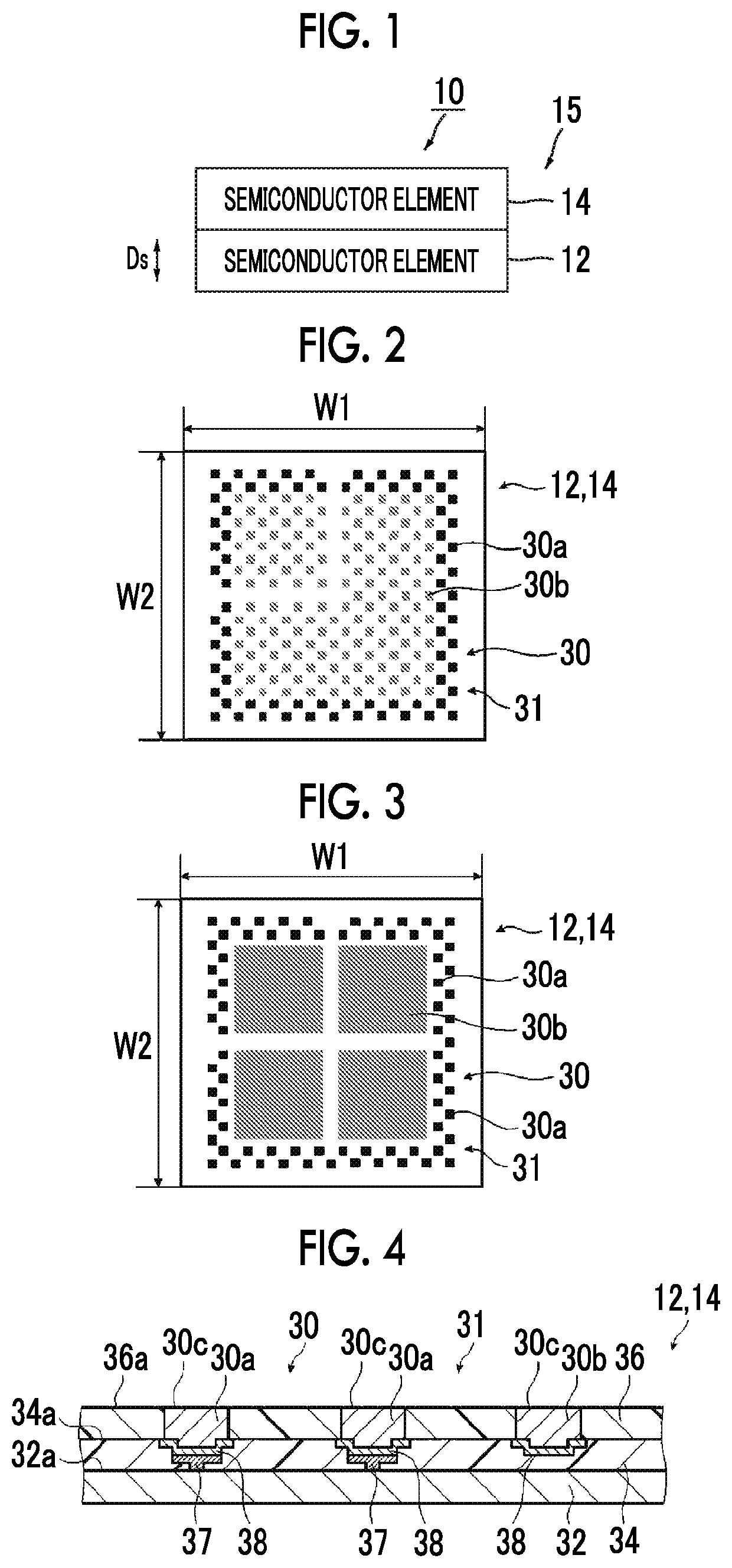Stacked device, stacked structure, and method of manufacturing stacked device
a technology of stacked devices and stacked structures, applied in semiconductor devices, semiconductor/solid-state device details, electrical devices, etc., can solve problems such as the failure of another semiconductor element, and achieve excellent heat dissipation and bonding strength
- Summary
- Abstract
- Description
- Claims
- Application Information
AI Technical Summary
Benefits of technology
Problems solved by technology
Method used
Image
Examples
example 1
[0555]In a test substrate 90 illustrated in FIG. 78, a silicon oxide insulating layer was formed on a surface of a silicon substrate, and terminals 92 were formed on the silicon oxide insulating layer as illustrated in FIG. 78 such that an area ratio of the terminals 92 on a surface 91 including the terminals 92 in a plan view was 45%. The terminals 92 were formed of copper.
[0556]The test substrate 90 was prepared through the following processes (i) to (vi).
[0557](i) Using a photolithography method, a resist pattern of the terminals 92 was formed on the surface of the silicon substrate as illustrated in FIG. 78 such that the area ratio of the terminals 92 on the surface 91 including the terminals 92 in a plan view was 45%.
[0558](ii) A sheet layer as a starting point of plating was provided in the resist opening (recess portion) of the resist pattern.
[0559](iii) The resist opening was plated with metal.
[0560](iv) The resist was stripped, and the terminals were arranged on the silicon...
example 2
[0566]Example 2 was the same as Example 1, except that the bonding configuration was surface activated bond (SAB).
example 3
[0567]Example 3 was the same as Example 1, except that the recess amount was 80 nm, the bonding configuration was SAB, a sealing resin was used during the bonding of the test substrates 90. As described above, by changing the treatment time of dry etching, the recess amount was controlled. The sealing resin will be described below in detail.
PUM
 Login to View More
Login to View More Abstract
Description
Claims
Application Information
 Login to View More
Login to View More - Generate Ideas
- Intellectual Property
- Life Sciences
- Materials
- Tech Scout
- Unparalleled Data Quality
- Higher Quality Content
- 60% Fewer Hallucinations
Browse by: Latest US Patents, China's latest patents, Technical Efficacy Thesaurus, Application Domain, Technology Topic, Popular Technical Reports.
© 2025 PatSnap. All rights reserved.Legal|Privacy policy|Modern Slavery Act Transparency Statement|Sitemap|About US| Contact US: help@patsnap.com



